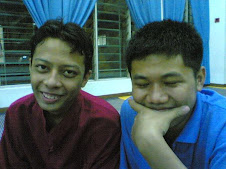 Researchers believe the lack of a specific bacterium in the gut may be a cause of Crohn's disease. A shortage of naturally-occurring bacteria is thought to trigger the inflammatory gastrointestinal disorder by over-stimulating the immune system. Now a French team has highlighted the bug, Faecalibacterium prausnitzii, which they show secretes biochemicals that reduce inflammation. The researchers, from the Institut National de la Recherche Agronomique, had already shown that patients with Crohn's disease have a marked deficiency in bacteria from the Clostridium leptum group. Their latest work shows that F. prausnitzii - a major component of this group - accounts for a large part of the deficit. The study appears in Proceedings of the National Academy of Sciences.
Researchers believe the lack of a specific bacterium in the gut may be a cause of Crohn's disease. A shortage of naturally-occurring bacteria is thought to trigger the inflammatory gastrointestinal disorder by over-stimulating the immune system. Now a French team has highlighted the bug, Faecalibacterium prausnitzii, which they show secretes biochemicals that reduce inflammation. The researchers, from the Institut National de la Recherche Agronomique, had already shown that patients with Crohn's disease have a marked deficiency in bacteria from the Clostridium leptum group. Their latest work shows that F. prausnitzii - a major component of this group - accounts for a large part of the deficit. The study appears in Proceedings of the National Academy of Sciences.Bowel surgery
The researchers found that Crohn's patients who underwent bowel surgery were more likely to experience a recurrence of the condition if they had low levels of F. prausnitzii. And in experiments on cultured cells, they showed that liquid in which F. prausnitzii had been grown provided an anti-inflammatory effect. The researchers said that if ongoing animal trials prove successful, human patients could benefit from a probiotic treatment with F. prausnitzii. Dr Anton Emmanuel, medical director of the digestive disorders charity Core, called the study "exciting" and agreed it raised the possibility of a therapeutic "replacement" therapy. "It would be interesting to see how this finding relates to the emerging body of evidence looking at genetic changes in some patients with Crohn's disease, with the known abnormal gene being one that codes for the body's ability to recognise foreign bacteria." Dr John Bennett, chairman of Core, said there was growing evidence that micro-organisms combined with immunological weaknesses to either cause, or exacerbate Crohn's symptoms. However, he said: "The gut contains a huge number and variety of organisms, and many of them have been investigated without any single one seeming to be entirely responsible." Dr Bennett said scientists were testing the theory that harmful bacteria could be neutralised, or at least counter-acted, by preparations of beneficial "probiotic" micro-organisms, but as yet no definitive proof of their effect had been produced.







